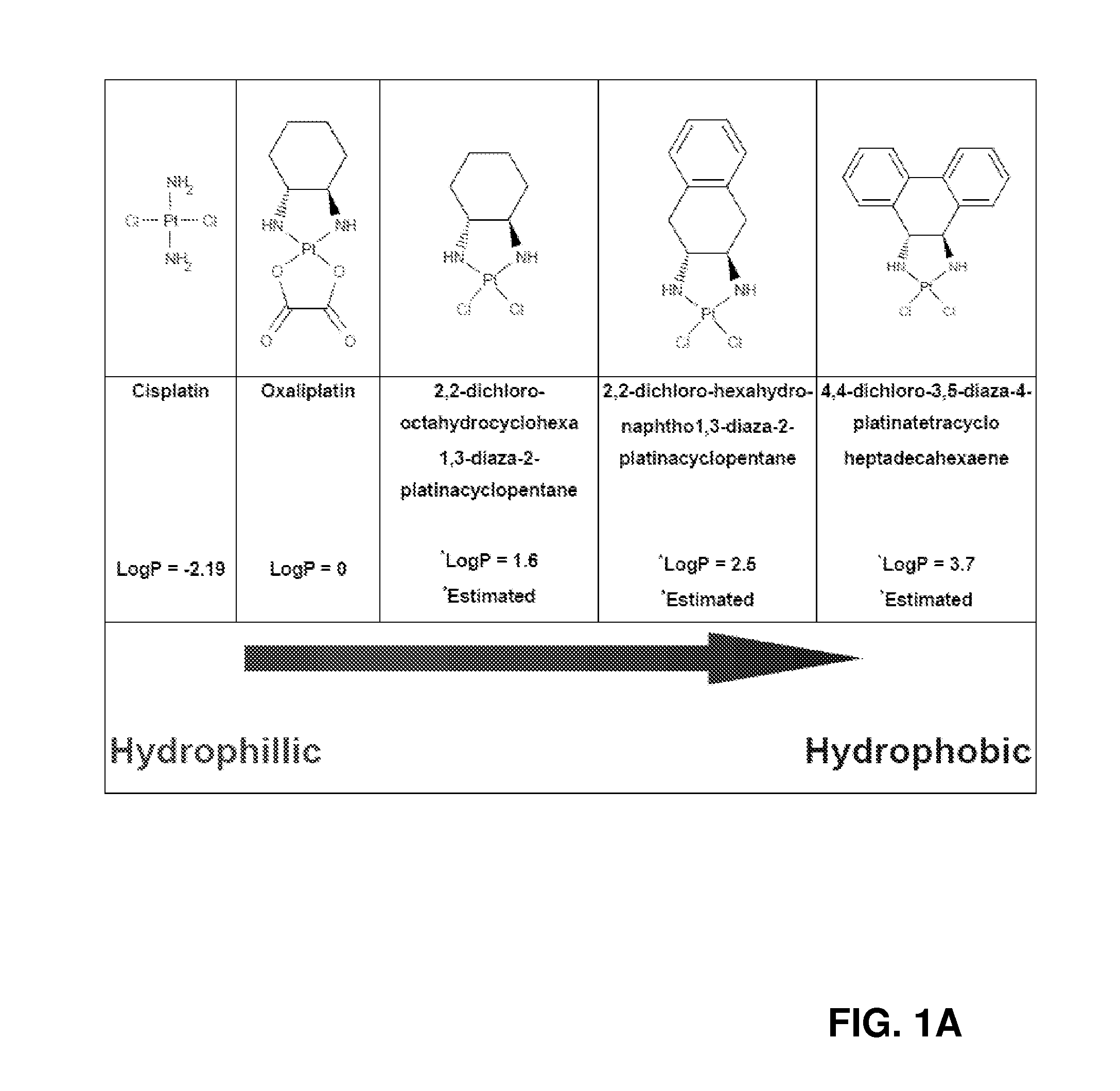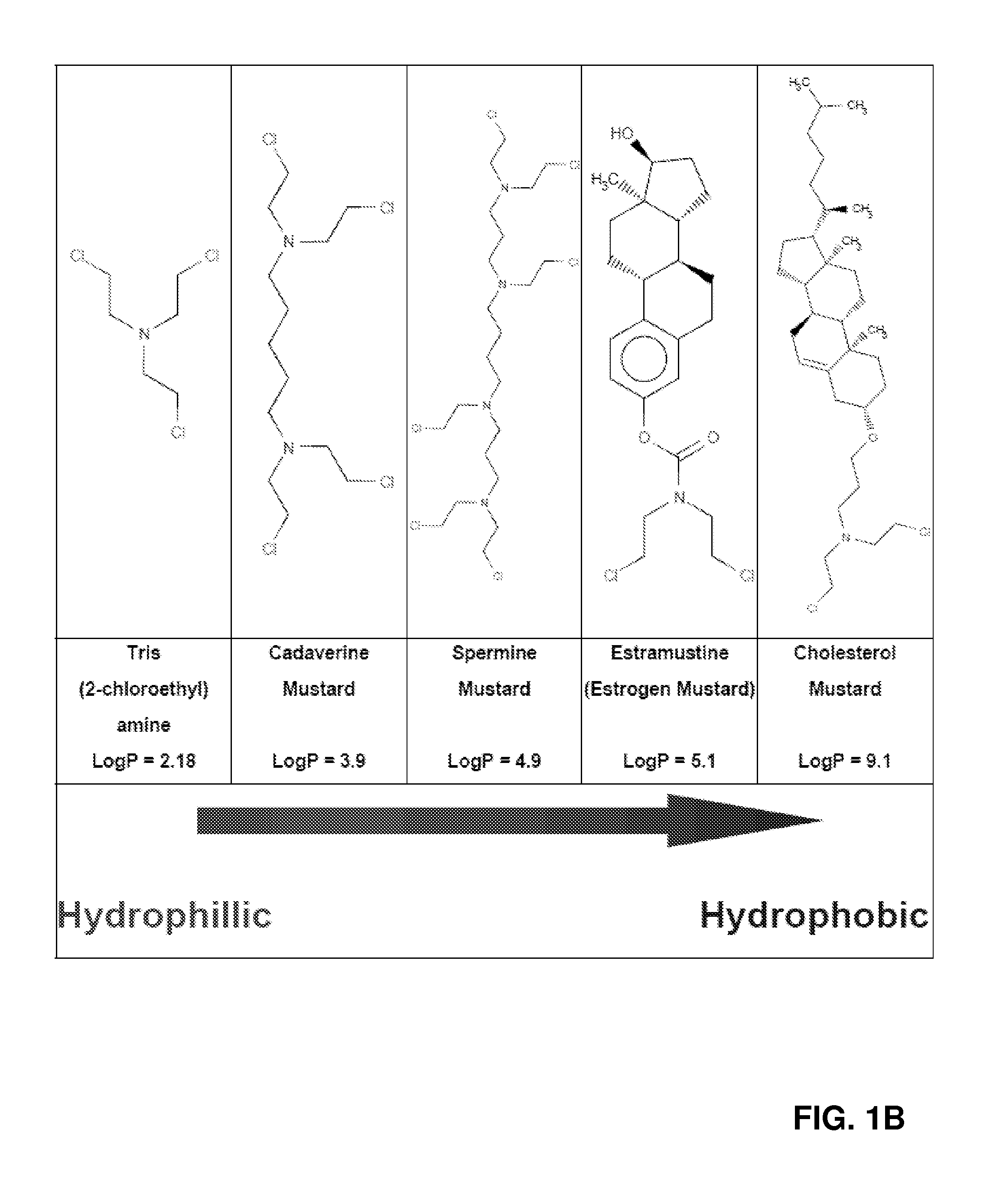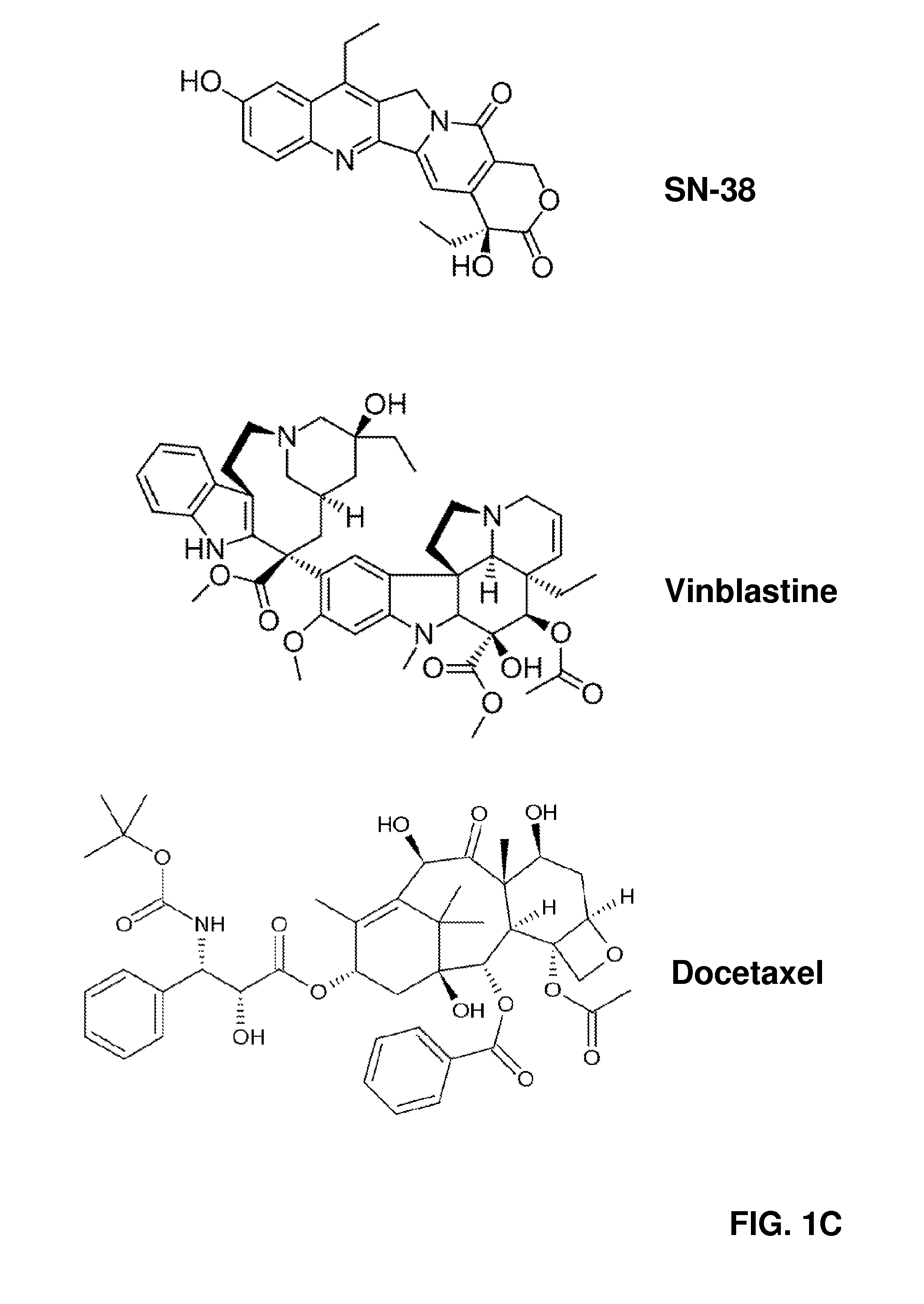Targeted nanovectors and their use for treatment of brain tumors
a nano-vector and brain tumor technology, applied in the direction of drug compositions, peptide/protein ingredients, antibody medical ingredients, etc., can solve the problems of inability to effectively and specifically deliver desired drugs to tumor sites, limitations that are further escalated, and lack of effective methods for making personalized drug delivery compositions, etc., to achieve rapid patient treatment
- Summary
- Abstract
- Description
- Claims
- Application Information
AI Technical Summary
Benefits of technology
Problems solved by technology
Method used
Image
Examples
example 1
Surface Epitope Mapping of Glioma Cell Cultures
[0097]To treat GBM, immunoglobulin G antibodies (IgGs) to cell surface epitopes that are over-expressed in glioma cells relative to other cell types were selected. GFAPAB is an IgG-type antibody to the glial fibrillary acidic protein (GFAP), a protein present in reactive astrocytes and also highly expressed in the majority of GBM cells. The interleukin-13 receptor (IL-13R) is a cytokine receptor, binding interleukin-13, and has been found to be up-regulated in a large range of cancers, including GBM. Normal, unreactive astrocytes express low levels of GFAP, and even lower levels of IL-13R. The epidermal growth factor receptor (EGFR) is the cell-surface receptor for members of the EGF family of extracellular proteins. This receptor is over-expressed, in either full length or truncated form, in many cancers, including GBMs. Surface epitope mapping was performed on primary glioma cell cultures. The binding of specific IgGs to GFAP:IL-13R:E...
example 2
Effectiveness of IgG / Active Agent / PEG-HCCs in Killing Glioma Cells
[0098]Applicants examined the effectiveness of the antibody-targeted, IgG / Active Agent / PEG-HCCs in primary human glioma cultures and control cultures of normal human astrocytes (NHA) and human cortical neurons (HCN). As GBM generates blood-brain barrier defects, this antibody-guided active agent delivery system can be used intravenously to actively target glioma cells.
[0099]In FIG. 4A, Applicants demonstrate the ability of the HADES formulation GFAPAB / SN-38 / PEG-HCCs, with each component concentration at 3.9 nM, 2 μM, and 2.6 nM, respectively, to induce cell death in primary GBM cell cultures. Due to the fact that nanomaterials can often interfere with biological assays, three different methodologies were used to measure cell viability. Total, viable, and dead glioma cell numbers in confluent primary GBM cell cultures were measured using ddTUNEL (a quantitative assay for 3′ OH DNA ends), Dead Green, and Hoechst stains....
example 3
HADES Combined Therapy
[0105]Clinically, the use of combined therapy in cancer treatment is an attempt to evade the heterogeneous response that a cancer cell population has toward different chemotherapeutics, and the ability of cancer cells to rapidly acquire active agent resistance. As SN-38, Vin, and Doc all have different pharmacologic targets, Applicants postulated that the three active agents might be able to potentiate each other's anti-cancer properties. Applicants incubated GBM, and also control NHA and HCN, with low levels of the three active agents in HADES form: consisting of three individual HADES formulations and an additional triple combination therapy where the three HADES individuals were combined. See FIG. 7. The low active agent levels chosen, 0.5 μM, allowed enough damaged and dying cells to remain at the end of a 24 h incubation to be characterized using specific probes of DNA damage, mitochondria dysfunction, loss of plasma membrane potential, and initiation of a...
PUM
| Property | Measurement | Unit |
|---|---|---|
| Composition | aaaaa | aaaaa |
| Therapeutic | aaaaa | aaaaa |
| Hydrophilicity | aaaaa | aaaaa |
Abstract
Description
Claims
Application Information
 Login to View More
Login to View More - R&D
- Intellectual Property
- Life Sciences
- Materials
- Tech Scout
- Unparalleled Data Quality
- Higher Quality Content
- 60% Fewer Hallucinations
Browse by: Latest US Patents, China's latest patents, Technical Efficacy Thesaurus, Application Domain, Technology Topic, Popular Technical Reports.
© 2025 PatSnap. All rights reserved.Legal|Privacy policy|Modern Slavery Act Transparency Statement|Sitemap|About US| Contact US: help@patsnap.com



